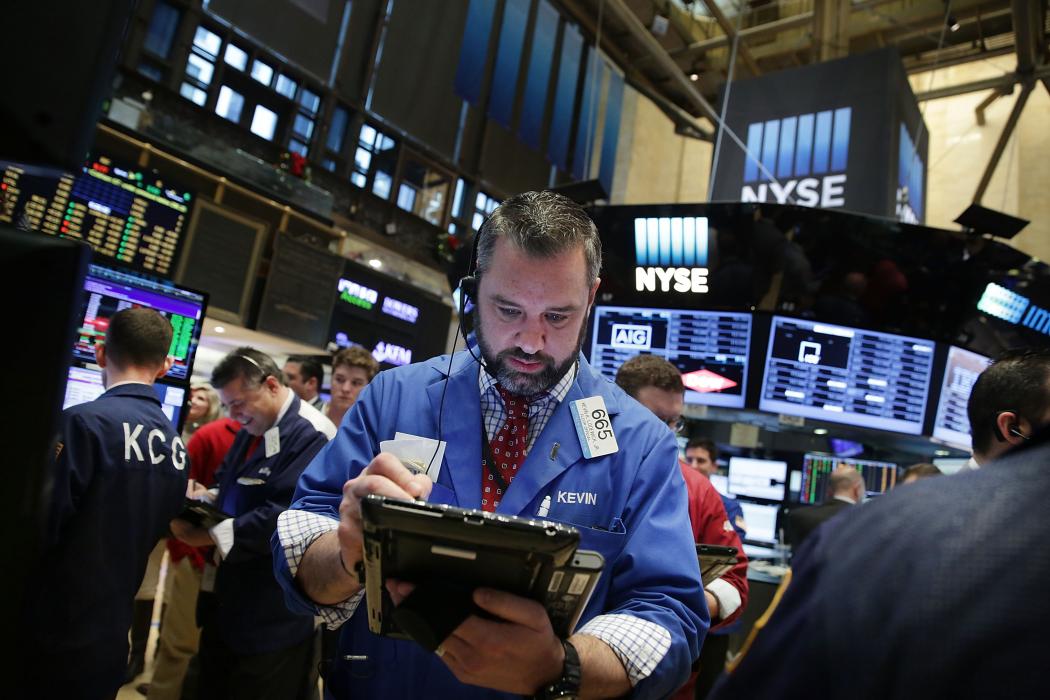US stocks ended one of their worst opening weeks in history with another sharp decline on Friday, as concerns about sagging energy prices overwhelmed early optimism about stronger-than-expected US jobs numbers and a stabilization of Chinese markets, CNBC reported.
All three major indices ended the week with losses of nearly 6% or more–one of their worst starts to a year in history. The Dow Jones industrial average notched its worst five-day start to a year since 1897, while the S&P 500's was its worst on record since 1929, Reuters reported.
And it was the worst week of trading at any time of the year since 2011, according to the Associated Press.
The Dow, which opened more than 100 points higher, retreated in late morning and see-sawed into the afternoon before closing down nearly 170 points, more than 1% of its total value. For the week, the Dow was off more than 1,000 points.
The Standard and Poor's 500 Index and Nasdaq Composite Index also were down about 1% for the day.
Oil prices, which closed down 11 cents, or 0.33%, at $33.16 a barrel, after erasing earlier gains, appeared to be the main culprit dragging the markets down. Pressured by persistent global oversupply and a bleak demand outlook, prices have now lost about 70% since mid-2014 and were down 10% for the week.
Employment Up
Earlier, US employment data showed a bumper 292,000 jobs were added in December, topping expectations of 200,000 by economists polled by Reuters, The unemployment rate held steady at a 7-1/2-year low of 5% even as more people joined the workforce, a sign of confidence in the labor market.
The upbeat report suggested that a recent manufacturing-led slowdown in economic growth would be temporary.
Undercutting the employment report somewhat was Commerce Department data showing US wholesale businesses trimmed their inventories 0.3% in November following a similar 0.3% drop in October. Sales plunged 1%, which was the biggest setback since January.
Economists are hoping that continued strong job gains will boost consumer spending and businesses will respond by restocking their empty shelves in coming months.
Before the jobs report, futures trading turned positive on some much-need positive news from China.
In Asia
The Shanghai Composite closed 1.98% higher on Friday, one day after a 7% stock drop triggered a circuit breaker and forced Chinese markets to close early for the second time in a week.
The People's Bank of China said Friday it would further liberalize interest rates. The central bank also said it would make the yuan more international, keep the currency basically stable, further improve the currency formation mechanism and deepen reforms of the foreign exchange management system and financial institutions.
In Asia, Japan's Nikkei finished 0.39% lower. In Europe, the pan European Stoxx 600 index was around 0.45% higher on Friday morning.
China resurfaced as a major fright factor. Regulators were forced to roll back an ill-conceived program for trading halts after Shanghai trading was immediately stopped on a more than 7% market plunge on two separate days.
Also, eight days of China setting its currency lower and lower put fear into the market that the yuan would continue to drop, exporting deflation and forcing devaluations of other Asian currencies. China notched up the currency Friday, and its stock market calmed.
Some Stocks Gain
MarketWatch spotted about three dozen S&P 500 stocks that managed to avoid the worst of the reckoning and end the week in positive territory.
Time Warner shares led the pack with a roughly 10% weekly gain, while Wal-Mart advanced 3.7%—a notable feat for a company whose shares didn’t exactly set the world on fire in 2015.
What Next?
After a jarring and brutal week for stocks, markets are primed for further pounding in the week ahead, with China, oil and now the start of the corporate earnings season all posing potential hazards.
Oil will bottom in the first part of the year, so stocks can move higher. "We hopefully will find the bottom in the first quarter. That would put us around probably another 6 to 8% downside on the S&P. That would put us at around a 15% peak to trough correction which is more consistent with a 1990s emerging market correction," Gina Martin Adams, institutional equity strategist at Wells Fargo Securities said and added that oil tanked 10% in the past week on continued reports of oversupply.


